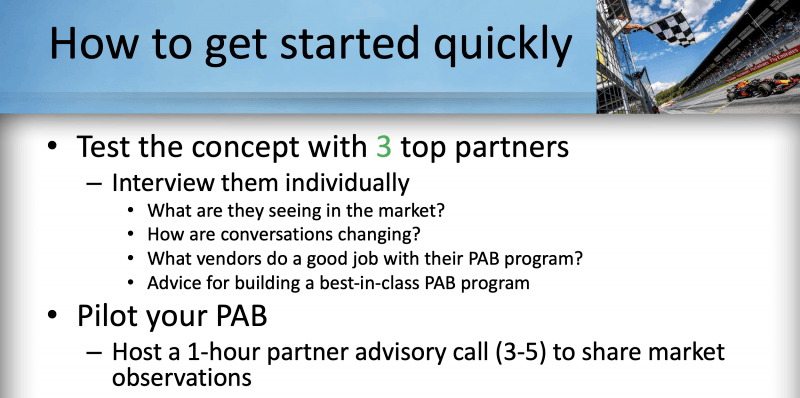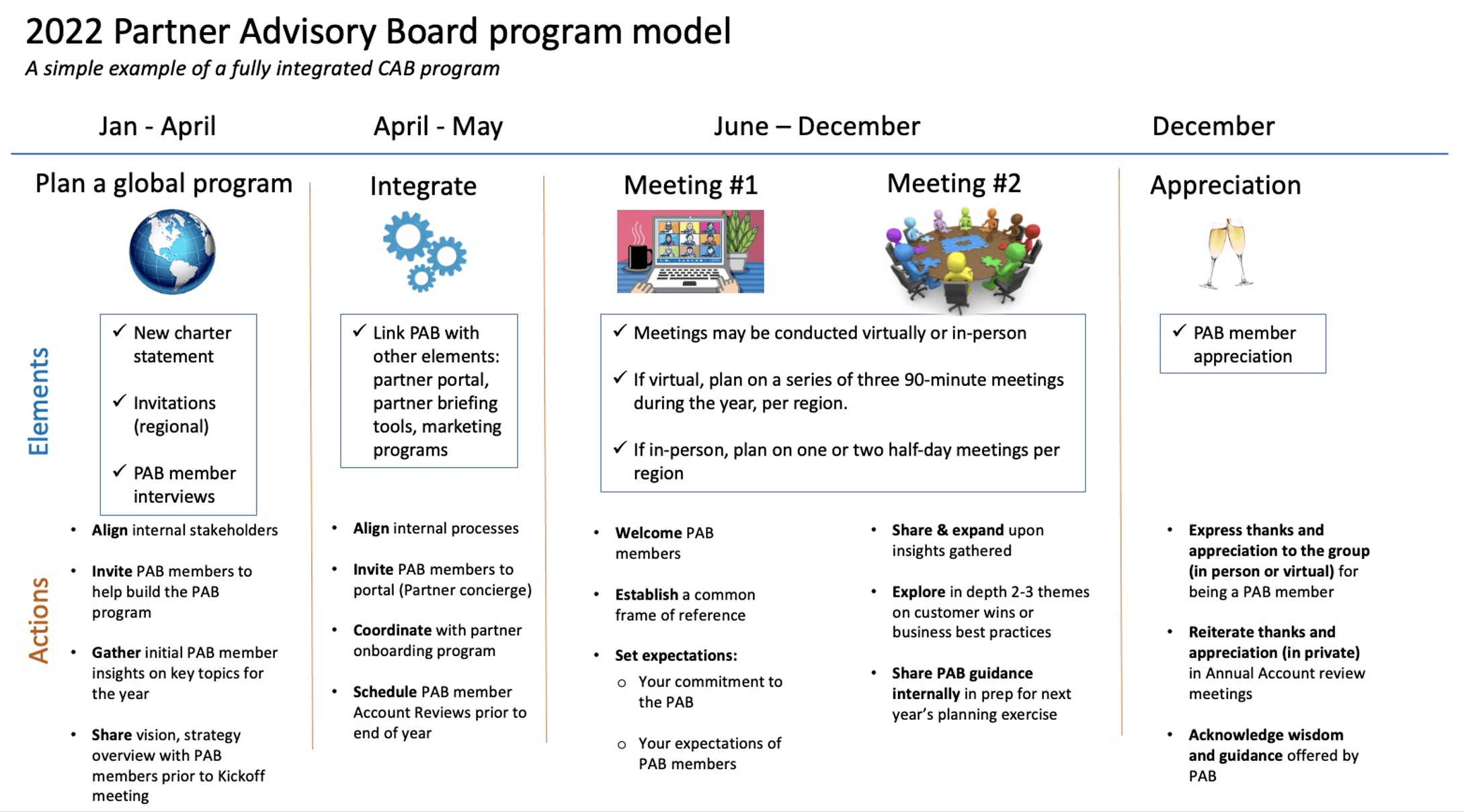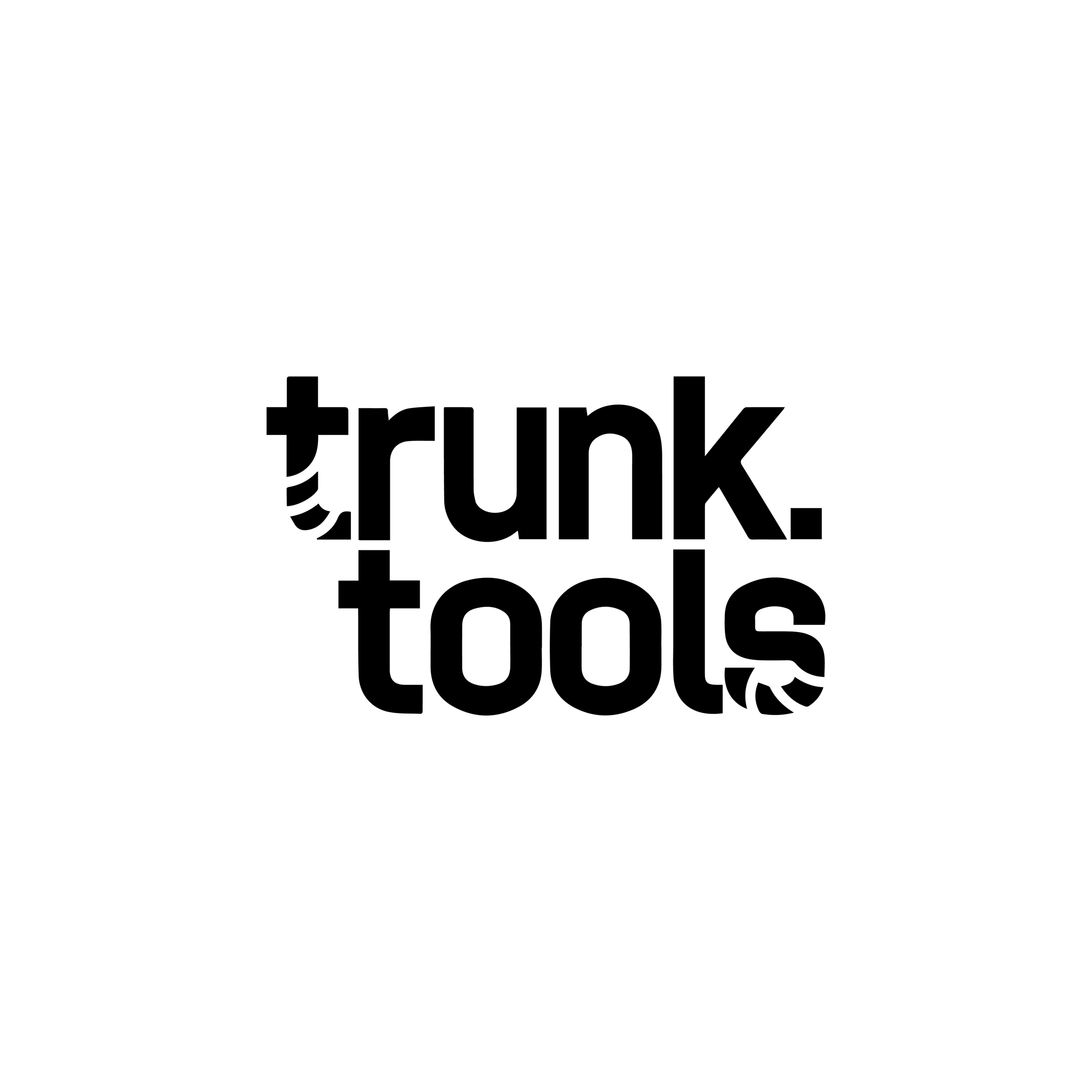What is a Partner Advisory Board & Why You May Need One

Does your B2B tech company host a Partner Advisory Board (PAB), or Partner Advisory Council (PAC)? If not, you may be at a serious disadvantage.
Lisa, a CEO of a small tech company is frustrated that channel growth has stagnated. “I need to accelerate sales through the channel, and I feel that we’ve hit a brick wall. I need to figure out how to get them more engaged.”
Jim, SVP of global channels for a mid-sized SaaS company, laments he’s been unable to get meaningful guidance from his most strategic partners. “For us to stay competitive, I need to be able to anticipate the strategic needs of our partners, how these needs differ between regions and provide them with the right mix of incentive programs and enablement tools. As an organization, we don’t know how to have this conversation.”
Jim and Lisa share a business imperative: To grow their businesses, they need to harness the full potential of their channel partners. They need a PAB.
The objective of your PAB program
The objective of a PAB program is to create a forum where you (the host company) and your most strategic channel partners can share and explore strategies that drive joint revenue growth and greater profitability.
In PAB meetings, your executive decision-makers meet with your best (most strategic) partners to talk about the future, changing market dynamics, what they need from you, and what you expect from them. It is a truly collaborative environment fueled by a commitment to achieve joint success.
Your company should have a global PAB program even if you are currently focused only on a single region. Thinking globally will allow you to scale your PAB program more easily when you are ready. When getting started, because regions will have unique business characteristics (e.g., buyer priorities, local business conditions, specific country/regional regulations, etc.), PAB meetings should be held regionally. This allows you to be more focused as you discuss local market dynamics. However, as your company grows and you embrace partners on a global scale, you can add a global PAB meeting. As an example, it is common for companies to hold quarterly regional PAB meetings and one global meeting.
When do I need a PAB program?
As a rule of thumb, when your business relies on the channel for more than 25% of a company’s annual revenue, you should invest in a PAB program. Your PAB program will help you harness your partner ecosystem to the fullest. This starts by leveraging your partners for market research, advice, and perspective. Hence the word “advisory” in Partner Advisory Board. PABs invite strategy-level conversations about the market and explore how you and your partners can win together.
PAB programs are typically owned by the VP of Channels, Head of Channels, or Channel Marketing. Your CEO and senior executives from your product, marketing, and customer success team will also participate. Remember, PAB programs are built to engage in a series of collaborative business discussions; these meetings are not negotiations nor are they operations reviews.
Getting started
If you are thinking about forming a PAB program but don’t know how to begin, here’s a quick exercise. Have an informal advisory call with three partners individually. Pick three specific leaders whose opinions you value and trust. Ask them for their advice about PAB programs. Your partners already sit on PABs sponsored by other vendors. They will have insights into what works and what doesn’t.
After you’ve collected some wisdom from these partners individually, schedule a one-hour “partner advisory call” where they join you and a few members of your leadership team. Share what you’ve learned, then continue the conversation you started individually. With this small-group session, you are not setting up (or committing to) a full PAB program. You are piloting the PAB concept. This pilot will help you decide if your team is operationally and organizationally ready to embark on a full PAB program.
There is no downside to this activity. If you like the engagement, then your first action item will be to document your PAB charter statement (an internal document that defines your program objective and rules of engagement and sets expectations regarding your company’s commitment to your program). If you discover your company is not quite ready, that’s okay, too. Either way, you’ve just gained some valuable information.

A typical PAB program
Companies typically host two or three PAB meetings throughout the year. (Advice: Meeting quarterly may be too much for companies just getting started with their PAB program. Don’t overcommit yourself.)
Prior to 2020, this half-day to full-day facilitated meetings were held in person; since then, many have been replaced with 90-minute virtual meetings that unfold over several quarters. In the future, companies will be wise to develop a hybrid PAB engagement model where some meetings are held 100% virtual and others require in-person attendance. Here’s what the 2022 PAB model looks like.

It is not uncommon for companies to invest in both Customer Advisory Boards (CAB) programs and Partner Advisory Boards (PABs) programs. Both programs follow similar best practices in design and operations, but the objectives and agendas are very different. Never mix attendees. Don’t invite customers to attend your PAB meetings; don’t invite partners to attend your CAB meetings. For more information on CAB best practices, visit KickStart Alliance’s CAB Resource Center.
Setting the right agenda
PAB-level conversations are about product and go-to-market strategies, not partner operations. Typical agenda topics include:
- Market trends & drivers: What is shaping the industry?
- Customer expectations: What are customers now asking of these partners? How and why have these conversations shifted?
- Product direction: Which products/positioning work best in your local market(s)? What doesn’t?
- Company strategy: Are we in sync with your business expectations?
- Partner priorities: Where are you (our partners) making investments over the next 3 years?
- Program best practices: What programs (from any vendor) work best for your team, and why?
- Enablement success factors: What are your partners’ expectations for pre-and post-sales enablement?
- Partner operations best practices: Explore a “day in the life” discussion on how your partners really work.
- Joint success: What can we do to better support your ability to position, sell, and implement our solutions? And, here’s what we need from you.
Here’s what’s not on the list:
- Host company product, program, or service updates
- Partner training (i.e., how to perform deal registration or use the partner portal)
- Product training
- Operational mechanics (such as how rebates are processed)
- One-on-one partner reviews
But wait. These partners compete with each other, right?
Maybe. The reality is that we live in a complex world. Today’s competitors are tomorrow’s partners. And vice versa. In fact, there is a good chance that your partner executives already know each other personally, or at least by reputation. What you all share is a business interest in delivering the best quality solutions to the market.
Whom you invite is directly related to the specific objective(s) behind your PAB program. Remember, the PAB program is a strategy-level focus group. At no time will you ask partners to share their “secret sauce” or reveal their competitive advantage. Instead, your PAB program is a market research tool where you are seeking advice and perspective that will help you (and them) deliver the best solutions possible. In this scenario, everyone wins: the customer, the partner, and you. Take the high road, and you will never have a hard time filling seats around your PAB table.







